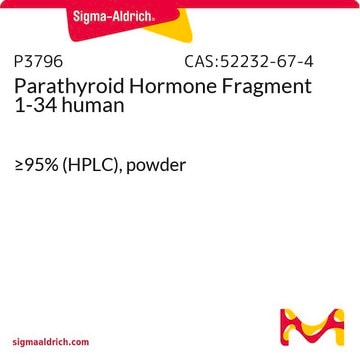P9872
Psora-4
≥98% (HPLC)
Synonym(s):
5-(4-Phenylbutoxy)psoralen
About This Item
Recommended Products
assay
≥98% (HPLC)
form
powder
storage condition
protect from light
under inert gas
color
white to beige
solubility
DMSO: 10 mg/mL, clear
storage temp.
2-8°C
SMILES string
O=C1Oc2cc3occc3cc2C(OCCCCc4ccccc4)=C1
InChI
1S/C21H18O4/c22-20-10-9-16-19(25-20)14-18-17(11-13-23-18)21(16)24-12-5-4-8-15-6-2-1-3-7-15/h1-3,6-7,9-11,13-14H,4-5,8,12H2
InChI key
JJAWGNIQEOFURP-UHFFFAOYSA-N
Biochem/physiol Actions
Features and Benefits
signalword
Warning
hcodes
Hazard Classifications
Aquatic Chronic 4 - Eye Irrit. 2 - Skin Irrit. 2 - STOT SE 3
target_organs
Respiratory system
Storage Class
11 - Combustible Solids
wgk_germany
WGK 3
flash_point_f
Not applicable
flash_point_c
Not applicable
ppe
dust mask type N95 (US), Eyeshields, Gloves
Certificates of Analysis (COA)
Search for Certificates of Analysis (COA) by entering the products Lot/Batch Number. Lot and Batch Numbers can be found on a product’s label following the words ‘Lot’ or ‘Batch’.
Already Own This Product?
Find documentation for the products that you have recently purchased in the Document Library.
Our team of scientists has experience in all areas of research including Life Science, Material Science, Chemical Synthesis, Chromatography, Analytical and many others.
Contact Technical Service









